 Across Europe, 2013 was a very bad year for the tech device market according to a study published today by GfK. While sales of tablets and smartphones continue to be on a roll (17.5 smartphones sold alone in France), sales of other tech-oriented/electronics devices such as tvs, digital cameras, PCs, etc continued to founder. France actually fared a lot better than its European counterparts as the market declined 2% last year to reach a total value of 15.4 billion euros while western Europe overall contracted 5%. While one big driver of this decline was likely the poor economic climate across Europe, this trend was in stark contrast to the global trend, where growth of tech devices/electronics grew by 3%. GfK estimates that in addition to the effects of a dour economy, one big reason that sales of these devices declined was that Europe has reached a saturation point vis-a-vis overall demand.
Across Europe, 2013 was a very bad year for the tech device market according to a study published today by GfK. While sales of tablets and smartphones continue to be on a roll (17.5 smartphones sold alone in France), sales of other tech-oriented/electronics devices such as tvs, digital cameras, PCs, etc continued to founder. France actually fared a lot better than its European counterparts as the market declined 2% last year to reach a total value of 15.4 billion euros while western Europe overall contracted 5%. While one big driver of this decline was likely the poor economic climate across Europe, this trend was in stark contrast to the global trend, where growth of tech devices/electronics grew by 3%. GfK estimates that in addition to the effects of a dour economy, one big reason that sales of these devices declined was that Europe has reached a saturation point vis-a-vis overall demand.
Smartphones and tablets will play a key role in kicking-off a turn-around
Connected devices are already becoming entrenched in the lives of most consumers and are expected to be the primary drivers of growth in the tech device market in coming years. In the study, they found that average French household now has 5.9 devices that could be considered ‘connected’. However, the only connected or smart devices that seem to resonate with consumers in the near-term are smartphones and tablets. For example, Gfk estimates that the rapid growth of smartphones over the last year has been fueled by the increasing size of screens, 18% are now 5″ or more which doubled in a year, and the expansion of 4G. Tablets, as we’ve reported on before, continue to be the star of the sector with an expected growth of 14% in 2014.
Will other types of tech/electronic devices finally get connected and smart as well?
As has been predicted for some time, our traditional tech/electronics will finally get smart as well. Take tv for instance where just a quarter of all units sold are ‘smart’. This is expected to grow to 30% next year and, likely, will continue to increase from there. However, consumers do not yet seem to get how to fully utilize smart TV. Where as smartphones and tablets actually drove consumers to use their phone, data, etc differently, most consumers still seem to use a ‘smart TV’ the same way they would use a traditional one. The same could be said for other connected devices as well, such as connected radio. It looks like manufacturers may need to put a bit more effort behind communication and education about what these devices are capable of.
But there are, of course, really promising areas of innovation such as headphones which while having experienced an overall decline last year, are set to show a resurgence with more headphones becoming wireless and, potentially, tracking fitness and health data. Cameras as well have been hit hard with the rise of the smartphone, but the smart camera, which already accounts for 30% of camera sales, is expected to turn things around in the coming years.
 The bulk of tomorrows devices we use will be ‘smart’
The bulk of tomorrows devices we use will be ‘smart’
When looking at smart objects in the purest sense of the word, GfK estimates that there were 300k of these devices sold in France last year, representing a value of 64 million euros (examples would include smart scales, thermometers, watches, etc). The overall value that smart objects represent in the sector is expected to at least double each year in the coming years due to the fact that more objects, even those that are well connected, will become ‘smart’. So, for example, by 2020, 60% of all tech/electronics devices will be ‘smart’ and 25% connected, shifting significantly from the current state of affairs where just 1% are smart and 57% are connected.

